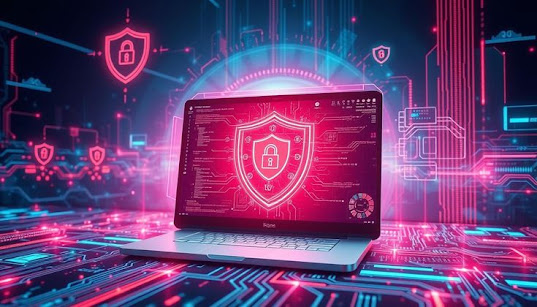AI vs. AI: When Hackers and Defenders Use Machine Learning
AI vs. AI: When Hackers and Defenders Use Machine Learning
A. Introduction: A New Cyber Battlefield
Artificial Intelligence has become a double-edged sword in cybersecurity. As defenders use AI to detect and respond to threats faster than ever, hackers are also leveraging AI to craft more sophisticated attacks. Welcome to the era of AI vs. AI in cybersecurity.
B. How Cybersecurity Experts Use AI
- Real-time threat detection using machine learning algorithms.
- Automated incident response systems (SOAR platforms).
- Predictive analytics for identifying potential vulnerabilities.
- User behavior analytics to detect anomalies.
- Phishing detection and email filtering.
AI enables defenders to analyze terabytes of data in seconds, making it a crucial tool for modern security operations.
C. How Hackers Use AI to Launch Smarter Attacks
Cybercriminals are increasingly using AI for:
- Automated vulnerability discovery in software and networks.
- AI-generated phishing emails with natural language processing.
- Deepfake content for scams and impersonation attacks.
- Bypassing traditional security systems using adversarial AI techniques.
- Malware mutation to evade AI-based defenses.
Hackers now train their own AI models to test and improve their attacks, making them harder to detect.
D. Real-World Examples of AI vs. AI
- Microsoft's AI security tools successfully blocked AI-driven phishing attacks in 2024.
- Darktrace vs. AI malware that mimics normal user behavior.
- AI-powered fraud detection systems used by banks to thwart identity theft.
- AI-Generated ransomware that adapts in real time to its environment.
E. Challenges in an AI vs. AI Battlefield
Even the most advanced AI systems can be tricked. This cat-and-mouse game is escalating with:
- Adversarial machine learning attacks.
- Biases and false positives in detection models.
- Training data poisoning.
- High cost of AI implementation and maintenance.
F. Ethical and Legal Implications
When AI goes rogue, who’s responsible? The use of AI in both attack and defense raises ethical questions:
- How much autonomy should AI have in defense decisions?
- Is it ethical to create AI honeypots that trick attackers?
- What happens if AI causes collateral damage during defense?
G. The Future: Autonomous Cybersecurity Systems
We're moving towards self-healing networks and autonomous defense systems that can detect, respond, and adapt in real-time.
However, these advancements must stay ahead of autonomous attack systems that evolve without human input.
H. Final Thoughts: Staying Ahead in the AI Arms Race
The future of cybersecurity isn't about eliminating threats — it's about staying one step ahead. As hackers get smarter with AI, defenders must invest in AI, training, and collaboration to protect digital assets.
AI vs. AI isn’t a concept — it’s the present. The question is: Are we prepared?





Comments
Post a Comment